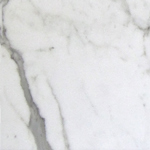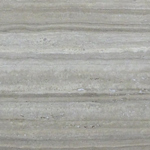|
About Stone
Limestones, Marbles, Travertine, and Basalt are quarried throughout the world in the
form of huge blocks, some weighing up to 20 tons. These blocks are then cut into slabs and
tiles and the faces are worked to the specified finish. |
|
Limestone
-text.jpg) |
Limestone is a sedimentary stone, layered and formed from particles of pre-existing rock along with the
skeletons and shells of sea creatures that lived in vast, warm seas millions of years ago.
When the mineral dolomite is present, it makes the limestone harder and capable of being
polished in the same manner as metamorphic marble. Most limestones are generally pale and
light in color, which makes them subtle and easy to blend into any color scheme. Limestone tile & slabs are quarried throughout the world and are used extensively, not only for
interior residential flooring, but also for exterior paving, commercial flooring, and
large institutional projects. Our limestones are durable, hard materials that are
appropriate for any project. These materials are available in honed, sandblasted,
bushammered and (in some cases) flamed finishes. All limestones must be sealed for long
term protection. |
|
Marble
 |
Marble is a metamorphic rock that was created through a
metamorphosis involving heat and pressure. It was once limestone, but over time, the
combination of intense heat and pressure caused the limestone to re-crystallize. Although
normally white, the recrystallization process can cause foreign substances to enter the
stone and create an infinite variety of colors and textures. Other minerals often grow
from impurities within the stone which can bring about veins and colored streaks. Marble is usually finely crystalline, hard, and dense and as a result can be highly polished. It
is versatile enough for use throughout the home, such as fireplace facings, ornamental
furnishings, walls and window sills. You can use it on almost every surface, including
vanities, shower walls, tub decks and flooring. Our Marbles are also available in a honed
or brushed finish for a more traditional look and must be sealed for long term protection. |
|
Travertine
 |
Travertine is a sedimentary rock and type of Limestone formed hundreds of millions of years ago in areas where ground water percolated through
the forming stone creating holes and fissures throughout the body of the material.
Extremely durable and hard, travertines are used throughout the world for major commercial
projects. Most travertine is white or cream colored but can come in yellows, reds, etc.
when minerals mix within the bed of the stone formation. It consists mainly of calcium
carbonate. It forms when calcium carbonate separates from water through evaporation.
Travertine is often used as decorative building stone because it is easy to cut. These
materials are available crosscut, honed, filled or unfilled, distressed, tumbled, or
straight cut. Travertines must be sealed for long term protection. |
|
Basalt
 |
Basalt is a dark-colored, fine grained extrusive igneous (volcanic) rock formed from the rapid cooling of basaltic lava exposed at or very near the surface of a planet or moon. It is composed mainly of plagioclase and pyroxene minerals. It most commonly forms as an extrusive rock, such as a lava flow, but can also form in small intrusive bodies, such as an igneous dike or a thin sill. Basalt underlines more of Earth's surface than any other rock type. Most areas within the Earth's ocean basins are underlain by basalt.
|
|
|

